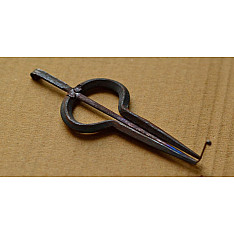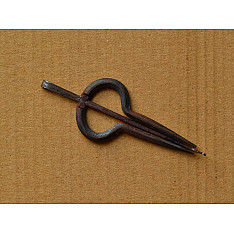Chimes from grasslands ~ Morchang { o }
- Availability: Out Of Stock
- Made & Mkt by: Luhar Asgar Noormamad
- Product Code: 4094-BELL-24
- Weight: 450.00g
- Dimensions: 4.00cm x 2.00cm x 0.20cm
Rs.375
The typical dispatch time is 2-3 days; however, in special cases, it may take longer. Please refer to the product details section for specific timelines. Once dispatched, we will share the tracking details with you.
For returns, you can file a request within 24 hours of receiving the product. If the package is damaged, please make a video while unboxing and share images of the damaged item along with your return request.
9328006304 ( WhatsApp )
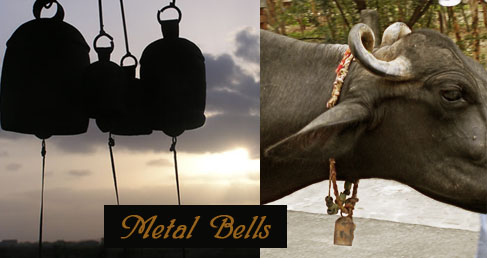
“Godhuli”… long shadows of dusk, a cloud of dust covering the orange horizon and the sounds of tinkering bells, announcing that the cattle is returning home.
Our villages have always had a strong relationship with animals, be it for farming or cattle raising. There are festivals especially for animals, such as Govardhan Puja, or Camel races, cattle fairs, special decoration for cattle as well as some crafts which are made just for the purpose of decorating or identifying cattle, such as embroidered decorations for camels, foot jewellery and tattoos. One such craft which originated with cattle rearing is the craft of metal bells, or “Ghantadi”, as known locally in Kutchh, Gujarat (India).
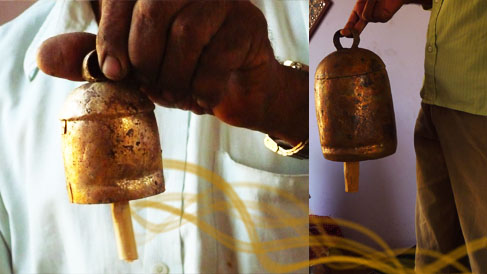
The craft is believed to be over a thousand years old, originated in Sindh, (currently in Pakistan). These bells were used to identify cattle. They were tied around the cattle’s neck so the owner would know of their whereabouts.
The makers of these bells are from the Lohar caste in Kutch and according to some of them, their families have been making bells for as far back as they can trace their ancestry.
There are thirteen sizes of bells and they are customized for different animals. A goat would have a small bell with a high pitched sound, while a cow would have a larger one with a deeper note. Even in the same size, the bells are customized with different sounds, or notes, to differentiate between cattle belonging to different owners. In each size, upto five or six different notes can be made.
The bell is made of iron and coated primarily with copper, along with a few other metals. They are made from scrap iron sheets which are repeatedly beaten to join together and to give them the required shape. The metal parts are neatly joined by expert hands by a locking system without any kind of welding.
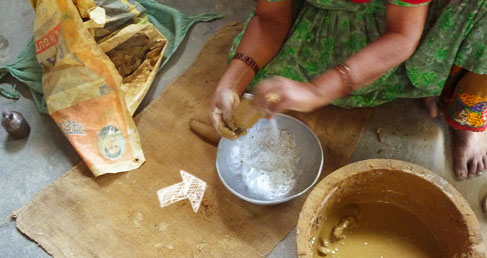
Then they are coated with powdered copper with the help of mud paste and then heated in a furnace to fix the powdered copper on the surface of the bells. Once cooled and ready, a wooden piece is attached to the centre of the bell for that characteristic sound which is beautifully sonorous. Denting of the bell to get the perfect pitch is also done by hand, by repeated beating with a hammer. It takes a lot of expertise and very careful and sensitive use of sound as well as touch.
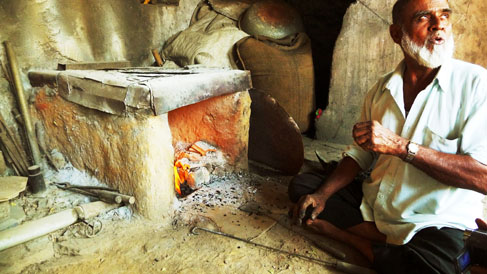
Bell making in Kutch is a wonderfully sustainable craft as the raw material is metal scrap which is purchased from junk yards and the only use of energy is in the furnace for preparing them. Even the waste generated is miniscule, comprising of small metal scrap and burnt mud.
Nowadays, this craft is gaining popularity as decorative items not just because they have a beautiful sound, but also because those sounds remind us of being close to the earth, the villages and our roots.
| Craftsmen | |
| Made by | Lohar Salim & Lohar Husan Siddiqui |
| Village | Nirona, Gujarat |
| Material | |
| Made of | Scrap Iron with copper coating |
At any space, just a few flowers can transform the atmosphere in a unique way, our celebrations feel incomplete without them. Since ancient times, off..
Rs.3,500
Long time ago, there was a king of Sindh, who like any other king, was fond of royal luxuries and used to sleep on a new bedspread everyday. One day, ..
Rs.4,400
Long time ago, there was a king of Sindh, who like any other king, was fond of royal luxuries and used to sleep on a new bedspread everyday. One day, ..
Rs.4,400
Long time ago, there was a king of Sindh, who like any other king, was fond of royal luxuries and used to sleep on a new bedspread everyday. One day, ..
Rs.4,400
Long time ago, there was a king of Sindh, who like any other king, was fond of royal luxuries and used to sleep on a new bedspread everyday. One day, ..
Rs.4,400
Long time ago, there was a king of Sindh, who like any other king, was fond of royal luxuries and used to sleep on a new bedspread everyday. One day, ..
Rs.4,400
Long time ago, there was a king of Sindh, who like any other king, was fond of royal luxuries and used to sleep on a new bedspread everyday. One day, ..
Rs.4,400
A camp in a desert or a hunting expedition in the middle of a forest or a battle field, something that stayed with the kings of the western India irre..
Rs.980
Exotic Echo is an organization which has worked for more than a decade now to revive the slowly dying and vanishing ancient art of textile ..
Rs.4,225
“If an image has to be made, it must be made of wax first” Vishnusamhita, 5th century AD.Under clouds of smoke emanating from earthen lamps, amid batt..
Rs.4,200
The Majuli Craft of AssamIn the heart of the mesmerizing village of Majuli, Assam, a vibrant tapestry of culture and craftsmanship unfolds. Here, wome..
Rs.4,240
Drawn symbols are probably the oldest way of preservation of information and wisdom, starting with depiction of life scenes in Stone Age caves, to tra..
Rs.1,100
As a young couple enters the sacred institution of marriage, anticipating a new life, new roles and a new household, a humble yet revered image of the..
Rs.2,240
Gathering commences in the middle of deserted pavilions where velvet carpets adorn the Dessert lands & Manganiyars play folk music as a bugle for ..
Rs.512 Rs.1,025
Gathering commences in the middle of deserted pavilions where velvet carpets adorn the Dessert lands & Manganiyars play folk music as a bugle for ..
Rs.512 Rs.1,025
Gathering commences in the middle of deserted pavilions where velvet carpets adorn the Dessert lands & Manganiyars play folk music as a bugle for ..
Rs.512 Rs.1,025
Gathering commences in the middle of deserted pavilions where velvet carpets adorn the Dessert lands & Manganiyars play folk music as a bugle for ..
Rs.512 Rs.1,025
A familiar chatter swells in the air as feet chase the trail of a carelessly flying odhani in the by-lanes of Bhuj, spilling colors all over. While&nb..
Rs.3,070 Rs.3,412
A familiar chatter swells in the air as feet chase the trail of a carelessly flying odhani in the by-lanes of Bhuj, spilling colors all over. While&nb..
Rs.9,310 Rs.10,345
A familiar chatter swells in the air as feet chase the trail of a carelessly flying odhani in the by-lanes of Bhuj, spilling colors all over. While&nb..
Rs.3,460 Rs.3,845










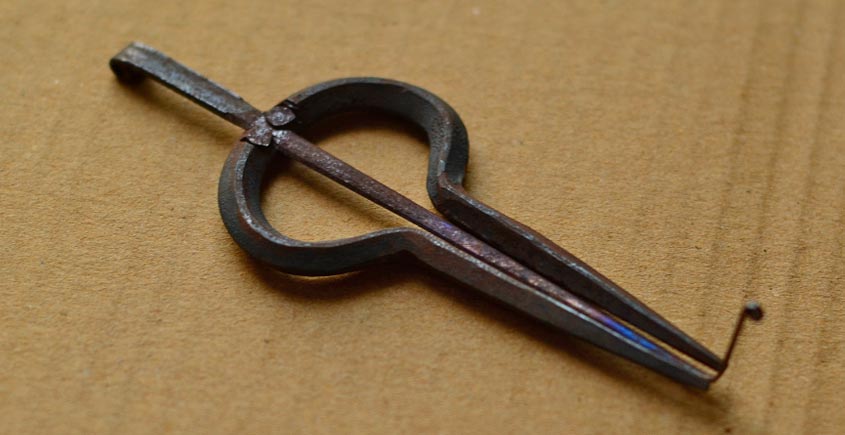
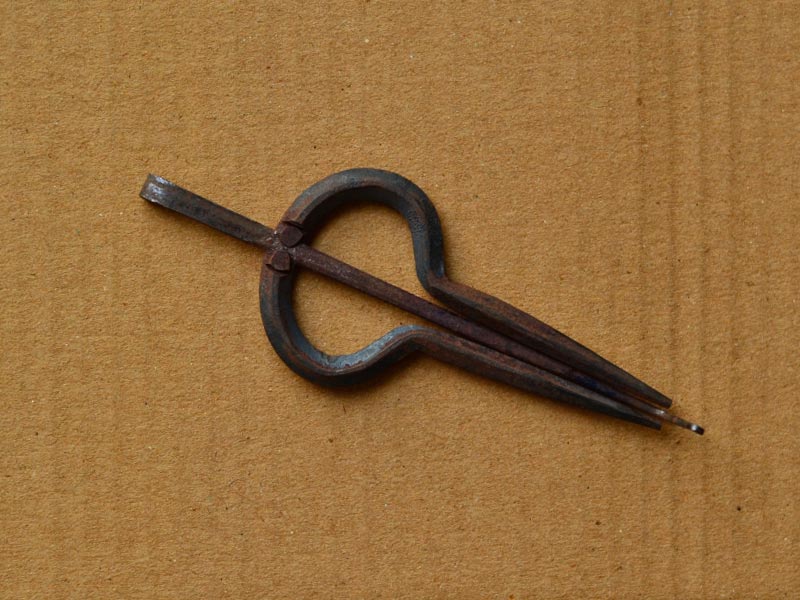



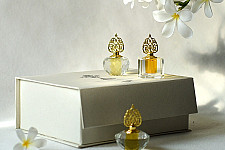
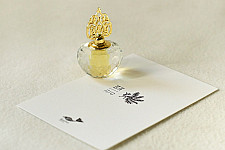
-225x150w.jpg)
-225x150w.jpg)
-225x150w.jpg)
-225x150w.jpg)
-225x150w.jpg)
-225x150w.jpg)
-225x150w.jpg)
-225x150w.jpg)
-225x150w.jpg)
-225x150w.jpg)
-225x150w.jpg)
-225x150w.jpg)
/25_12_2020/Applique-Kaam-⌘-Cushion-Cover-⌘-8-225x150h.jpg)
/25_12_2020/08-(2)-225x150.jpg)
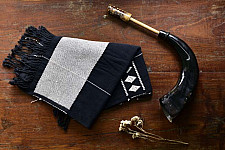
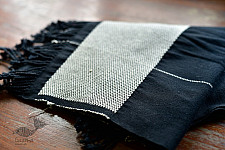
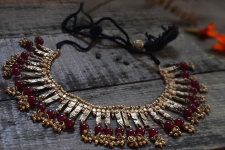
-225x150w.jpg)
-225x150w.jpg)
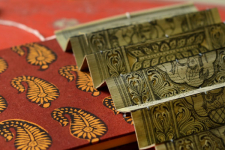
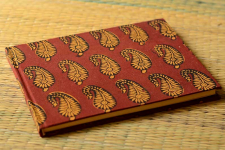
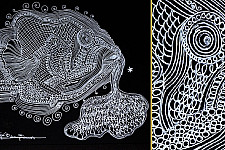
/02_08_2023/Lost-Wax-Art-✺-Handmade-Brass-Dhokra-Hiran-Deer-225x150h.jpg)
/03-DEER-BIG-(3)-225x150.jpg)









-225x150w.jpg)

-225x150w.jpg)

-225x150w.jpg)
